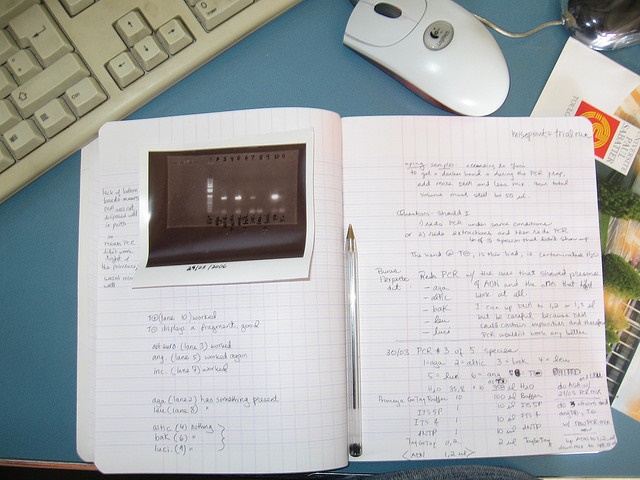In her article How to Get Perfect Protein Transfer in Western Blotting, Emily Crow recommends Coomassie staining your gel after transfer to the membrane to check the quality of the transfer. A good transfer should not leave behind proteins and PVDF membrane, stained by 0.1% Ponceau S in 5% phosphoric acid and destained with water should show uniform bands of mostly ribosomal proteins.
But what if you stain a gel first, and then want to use it for Western blot? Can it be done? If you transfer a Coomassie-stained gel to a membrane, you will see that the proteins transfer fine (by monitoring transfer of the prestained protein ladder), but will the Coomassie-stained proteins react with antibodies?
The answer is yes: western blotting Coomassie-stained proteins can be done, but it’s not a simple or efficient process. As you know, there are two types of Coomassie stains – “classical” and “colloidal”. Proteins stained by one of these two methods will behave differently if you try to blot them afterwards.
Classical
The classical Coomassie treatment involves incubating the gel in a mix of 40% methanol and 10% acetic acid (the solvent for the Coomassie stain), which should, theoretically, interfere with transfer.
Enjoying this article? Get hard-won lab wisdom like this delivered to your inbox 3x a week.

Join over 65,000 fellow researchers saving time, reducing stress, and seeing their experiments succeed. Unsubscribe anytime.
Next issue goes out tomorrow; don’t miss it.
However, there is one report (1) that western blot of gels stained with this method is difficult, but not impossible. The authors used a nitrocellulose membrane and recommend increasing the transfer time 3 fold and the exposure time by 3.5-fold. However, even an increased transfer time did not result in complete transfer of the proteins, and the signal was weaker. The authors observed transfer of 25% of the protein bound to the membrane.
Colloidal
In theory, transfer of proteins from a gel stained with colloidal Coomassie stains should be even easier, because it stains only proteins and doesn’t require destain. I tested this hypothesis recently using a gel that had been freshly stained with InstantBlue. I increased a wet-blot transfer time 1.5 times, but otherwise followed the usual Western blot protocol and got a reasonable result: my protein, which I could not see on the stained gel, was easily detectable using my usual peroxidase-conjugated secondary antibody and an X-ray film detection system. Overall, the amount of time it took was comparable to doing a Western on a bog-standard non-stained gel.
So, to summarize, it is possible to Western blot Coomassie-stained proteins, but I would only recommend trying this if you used a colloidal stain.
Do you have any experience in blotting from non-Coomassie stained gels?
Reference:
(1) Velvizhi Ranganathan, Prabir K. De. Western Blot of Proteins from Coomassie-Stained Polyacrylamide Gels. Analytical Biochemistry V 234 (1), 1996, pp. 102–104
You made it to the end—nice work! If you’re the kind of scientist who likes figuring things out without wasting half a day on trial and error, you’ll love our newsletter. Get 3 quick reads a week, packed with hard-won lab wisdom. Join FREE here.







